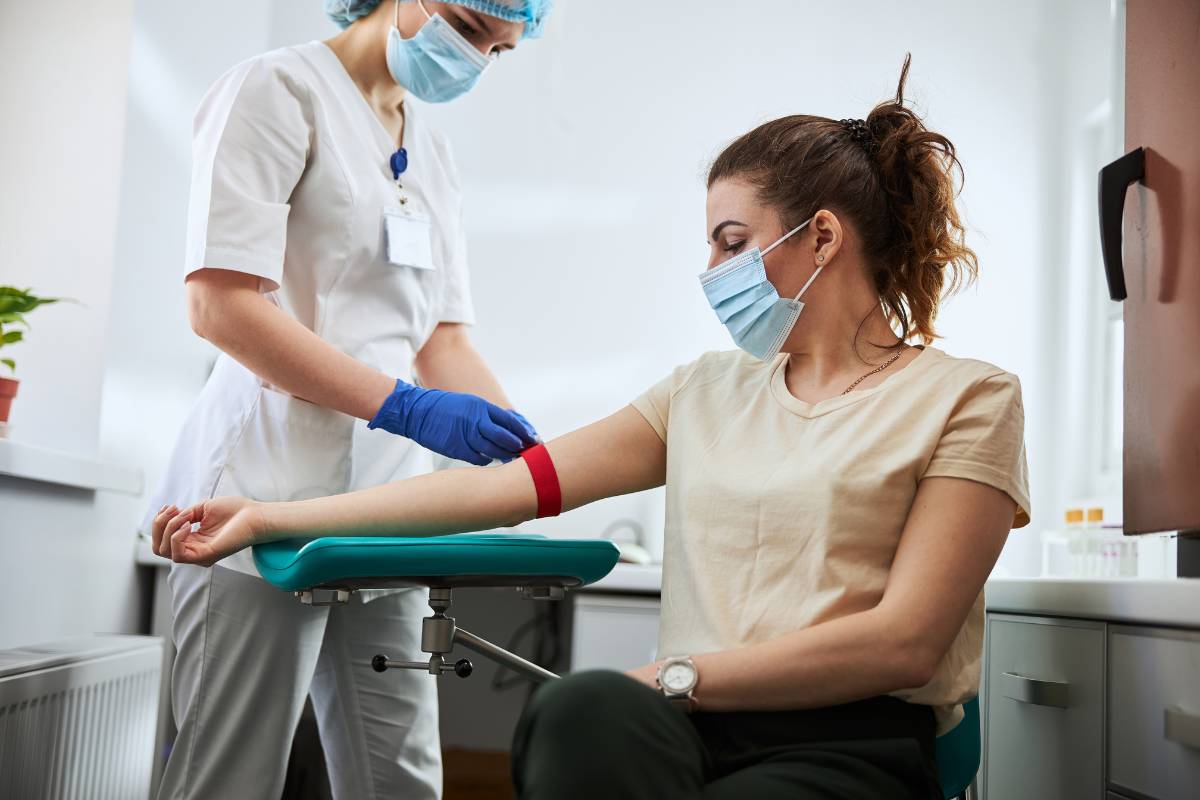Phlebotomy License vs. Certification: Which Do You Need?

Considering a career as a phlebotomist or phlebotomy technician? These allied health professionals gather blood samples to help diagnose patients with diseases, hormonal imbalances, and more.
There are two main credentials in this role, so you might be wondering about the difference between a phlebotomy license vs. certification. Both show that you have the skills for the job, but which is right for you? Let’s explore the basics before delving into your options.
The Role of a Phlebotomist
A phlebotomist can work in settings ranging from acute care hospitals to outpatient clinics and community health centers. In a phlebotomy training course, you’ll learn the following skills:
- Drawing blood samples using venipuncture technique
- Communicating therapeutically to ease patient anxiety during blood draws
- Labeling, handling, and storing blood samples
- Handling equipment, including needles, tubes, and blood collection devices
- Adhering to safety and infection protocols to prevent needlestick injuries and minimize the risk of bloodborne pathogens
Phlebotomy License vs. Certification: What’s the Difference?
A phlebotomy certification shows that you have the necessary skills to meet that specific certification’s requirements. In contrast, a phlebotomy license is a legal credential that you’ll need to acquire to practice in certain states. In most states, a course and certification is enough to practice.
Phlebotomy certifications are offered by professional organizations. There are several different certifications that you might pursue, and most require that you complete an approved training program with practice hours. Some require work experience as well.
Check out some of the leading phlebotomy certifications:
- Certified Phlebotomy Technician (CPT-NHA, National Healthcare Association)
- Phlebotomy Technician Certificate (PTC-ASPT, American Society of Phlebotomy Technicians)
- Phlebotomy Technician Certification (PBT-ASCP, American Society for Clinical Pathology)
- Phlebotomy Technician (NCPT, National Center for Competency Testing)
- Registered Phlebotomy Technician (RPT-AMT, American Medical Technologists)
You may need to learn how to get a state license for phlebotomy depending on your location. There are currently three states that require additional licenses and state certifications to practice:
- California requires one of three state-approved phlebotomist certifications.
- Louisiana requires a state-approved license and certification.
- Washington requires a state certification and a training program.
Phlebotomy License vs. Certification: Cost
What can you expect to spend on a phlebotomy certification vs. license? If you live in a state where a license or extra certification is required, you’ll need to pay for your training, professional certifications, and the cost of your state credential.
If your state doesn’t require legal licensure or certification, you’ll likely only need a training program and professional certification.
Here’s a cost breakdown of different phlebotomy certifications, and what you could pay to be licensed or credentialed in the states where it’s required:
- Initial training program: $500–$2,000
- Professional phlebotomy certification: $100–$200 (some also require renewal fees)
- California phlebotomy certificate: $100
- Louisiana phlebotomy license: $40
- Washington medical assistant-phlebotomist: $145
How to Become a Licensed Phlebotomist: 4 Steps
Remember, not everyone needs a license to be a phlebotomist, but the initial steps to become a phlebotomist are similar no matter where you reside. Be sure to check your state requirements for any additional steps to practice.
Step 1: Complete a Phlebotomy Training Program
Enroll in a phlebotomy training program accredited by a recognized organization, such as the National Accrediting Agency for Clinical Laboratory Sciences (NAACLS) or the Accrediting Bureau of Health Education Schools (ABHES). These programs typically include classroom instruction and hands-on practice in drawing blood.
Step 2: Gain Experience
Some phlebotomy certifications only require completing a program, but some require a certain number of hours as a practicing phlebotomist. For example, you can qualify for AMT’s phlebotomy technician certification if you have just completed a training program or if you haven’t done a program but have six months of phlebotomy employment in the past three years. Research phlebotomy certifications and their requirements to ensure you can meet them.
Step 3: Apply for Certifications and Take Any Necessary Exams
Once you’ve completed your certification requirements, it’s time to apply for certification with your certifying body. If you plan to apply for state licensure afterward, be sure the certification you apply to meets your state’s requirements. For example, if you plan to practice in California, be sure your certifying organization is on their list of approved certifications.
Step 4: Apply for State Licensure (If Required)
Once you’ve acquired a phlebotomist certification, you can apply for a state phlebotomy license as needed. Depending on your state and certification, you may also have to take an additional phlebotomy license exam before you can begin practicing.
Phlebotomy License vs. Certification: FAQs
Is there a national phlebotomy certification?
In most states, phlebotomy is not a government-licensed profession. There are some certifications that have “national” in their name, but these are offered by private organizations. Check with your state’s and organization’s requirements before enrolling in a program to ensure it meets the requirements for practice.
What phlebotomy certification is best?
The certification that’s best for you is one that meets your employer’s specifications. If you’re not sure which one to enroll in, try calling a medical clinic or hospital close to you and asking if they require their phlebotomists to hold a specific certification.
Are You Looking to Level Up Your Career?
IntelyCare has open roles for nursing professionals like you. Now that you’ve determined whether a phlebotomy license vs. certification is best, start finding fresh opportunities today. Create your account and get personalized nursing job notifications.
